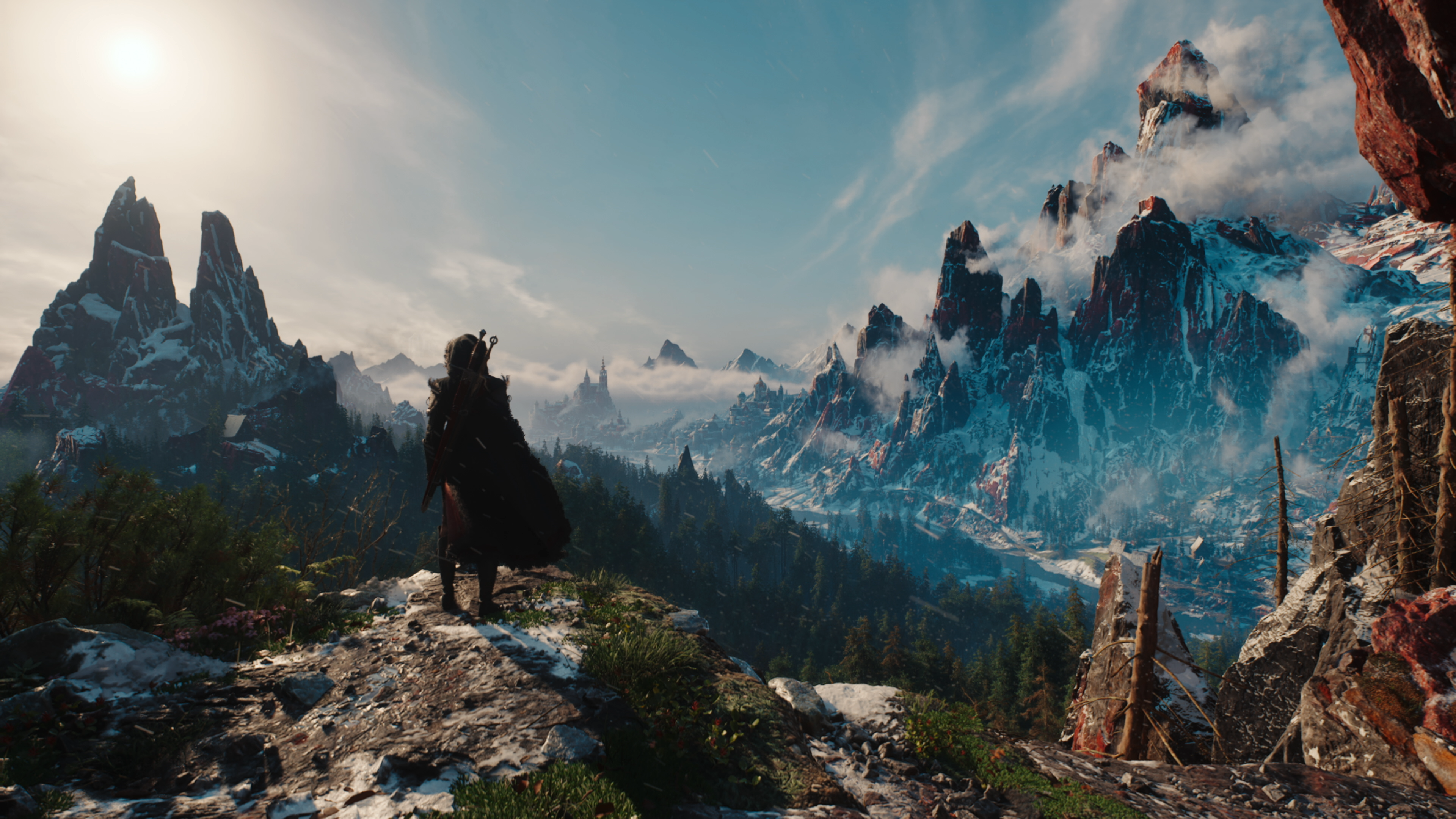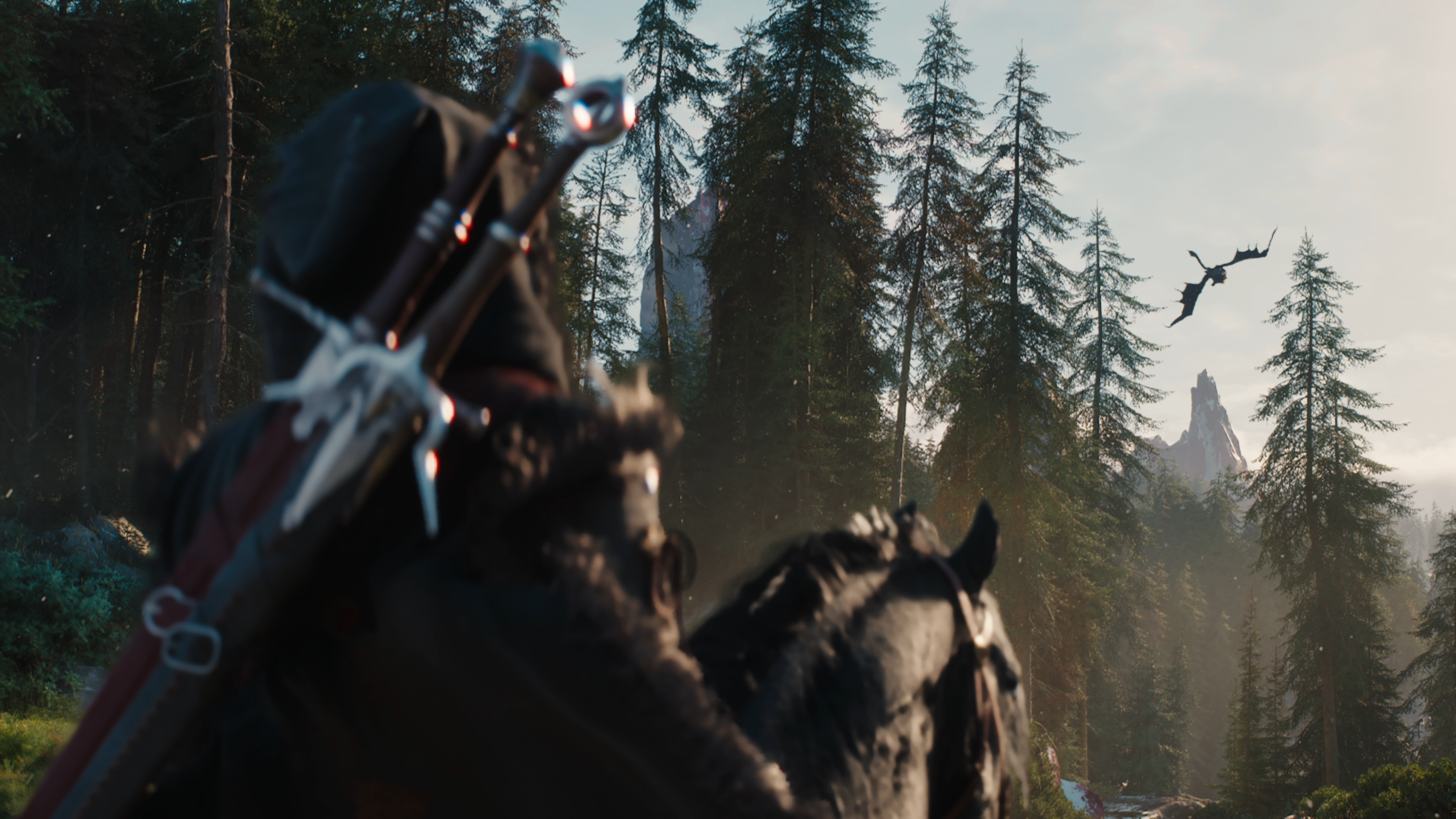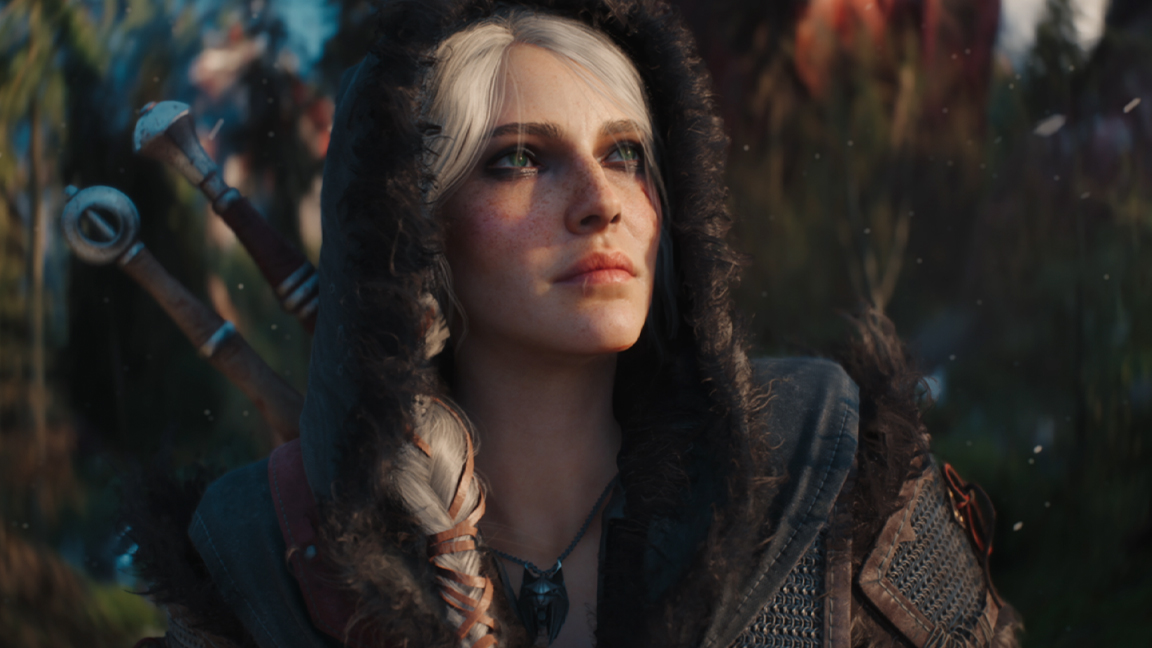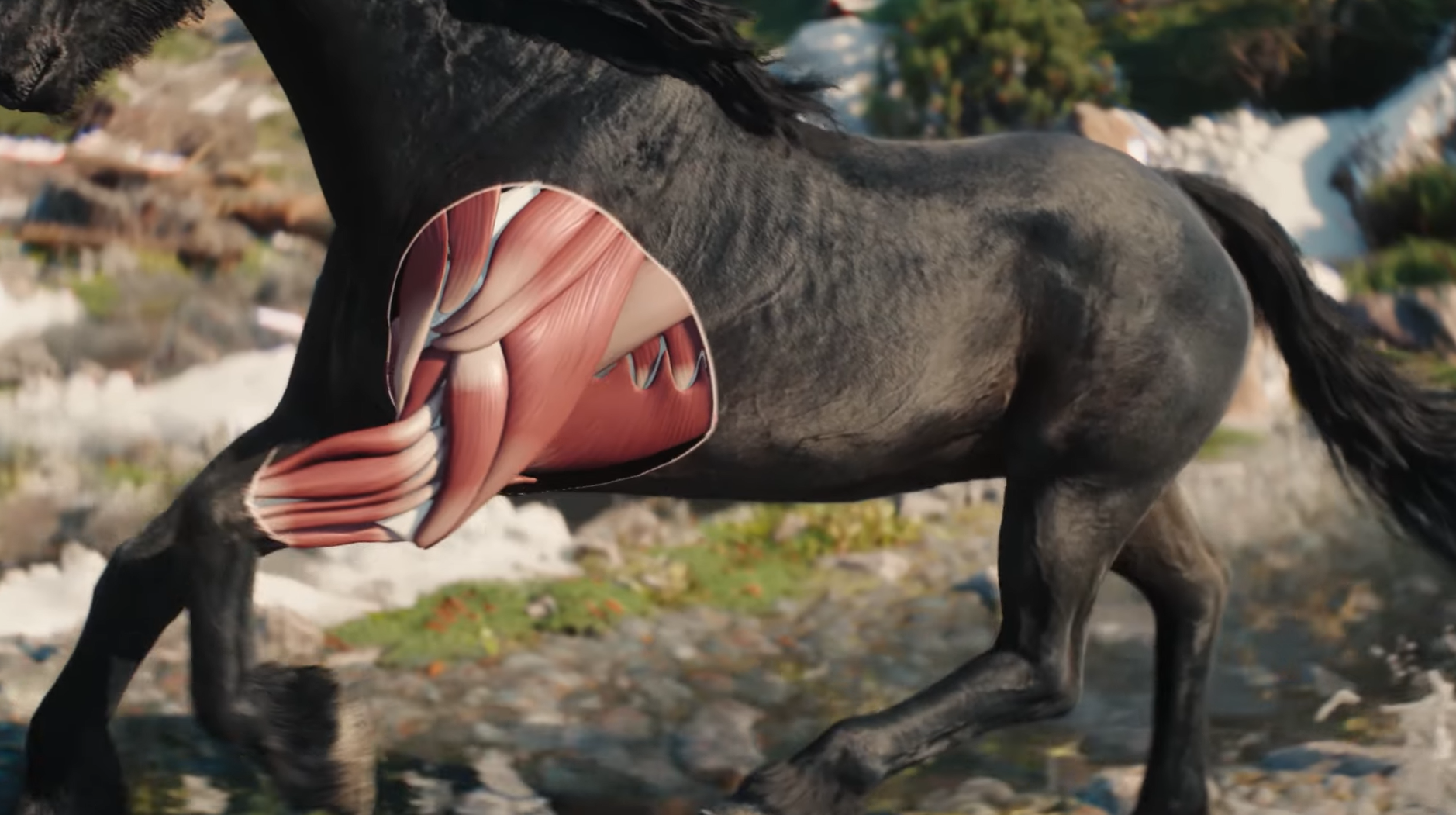
When CD Projekt Red unveiled The Witcher 4 tech demo at Unreal Fest, the reaction was immediate. A glimpse of the future of The Witcher, a peak behind the curtain at a new partnership and the launch of Unreal Engine 5.6 tools every dev, artist and animator will be clamouring to use – The Witcher 4 demo lit a fuse under Unreal Engine.
This was a technological milestone for open-world games, built on a groundbreaking collaboration between Epic Games and CD Projekt Red it feels like a reset of sorts, putting UE back in the hands of leading studios and asking what more they need.
From the photorealistic 'infinite forest' to smooth 60 fps performance on a base PS5 with raytracing, the demo marked a step-change in how game environments, and the characters that move through them, can be built.
This isn’t The Witcher 4, of course, as both Wyeth Johnson, Senior Director of Product Strategy at Epic Games, and Michał Janiszewski, Environment Art Director are at pains to point out. This is a tech demo, an ambitious marker to aim for.
“This is a technical demo, not a game,” Wyeth Johnson tells me. “Its goal is to stretch what’s currently possible, to show what tools are in the toolbox.”
Still, the implications for The Witcher 4’s future, and for game developers worldwide, are exciting. When I say is this the end of UE5 worlds that look like granite quarries, both devs smile – I'll take that as a knowing 'yes'

A forest grown from collaboration
The Witcher 4 Unreal Engine 5.6 demo is the culmination of years of collaboration between Epic and CD Projekt Red, as both studios pushed the Unreal Engine to new limits. According to Wyeth, the relationship began with mutual respect: “CD Projekt had done a lot of technical analysis before moving to Unreal Engine. They knew what they needed to make the kind of games they make, some of the most ambitious in the world, and we had to listen, with humility.”
This dialogue evolved into co-development. One standout result? Foliage with Nanite support, or as Wyeth calls it, “a heck of a research problem”.
“95% of our screen is often foliage,” Michał explains. “We needed it to feel natural. Our art team set the bar high. Without Nanite Foliage and fast geometry streaming, the forests you saw, dense, endless, alive, wouldn’t be possible.”
This idea of an 'infinite forest' isn’t just a visual effect, it’s a scalable, modular biome built with Nanite Foliage, a next-gen extension to Unreal Engine’s virtualised geometry pipeline. That includes high-density tree coverage, dynamic lighting and terrain streaming across a vast landscape.
“We truly started at the hard part,” Wyeth tells me. “A northern spruce forest is a tricky one to get right, and it looks amazing.”


These forests aren’t painted on, they’re built from real geometry, broken down into instanced modular parts. LOD transitions are handled smoothly through voxelization and HLOD blending, meaning the same forest can scale from hero shots to distant views with no visible pop-in.
“If you want it to look as good as it can possibly look, and you need to duplicate it off to infinity, you have no choice but to come up with a new idea,” Wyeth explains.
Fast Geo, a co-developed system, handles dynamic asset loading, streaming terrain and geometry into memory as the player moves through the world, a core requirement for open-world traversal.
“Wherever you look is a potential bottleneck,” says Wyeth. “If it's too slow, you make it faster. That was the guiding light.”
Despite all the tech, this The Witcher 4 demo an artist-led project. CDPR’s team focused on making the forest feel lived-in, using real-world reference, handcrafted props, and high-quality scans, then integrating them into a procedural world that remains art-directed.
New tech for vast worlds
The Witcher 4 tech demo isn’t purely about one innovation shares Wyeth, it’s more of a tapestry of interconnected systems, all optimised to run seamlessly at 60 fps on a base PlayStation 5. That includes dynamic crowds, chaos cloth physics, advanced motion matching, and the Fast Geo streaming.
“You can’t just fix one area,” said Wyeth. “It’s the whole frame. Everything’s connected, you look at the scene, find what’s slow, and make it faster. That’s the only path forward.”
He adds: “We’re not just making tools, we’re trying to solve real design problems. If your scene demands thousands of detailed trees, or hundreds of NPCs reacting to one another, we want Unreal to make that possible.”
CDPR’s games are known for more than just technical prowess, with Cyberpunk 2077 now seen as a new graphics standard for games as well as a defining open world rich in lore and layered with lived-in spaces. They craft large, dense worlds you want to live in, and achieving that takes more than polygons; it requires purpose.
“Technology alone can overwhelm,”Michał Janiszewski, Environment Art Director explains. “So art direction absorbs the tech. My mood boards were full of real forests. We aimed for something deeply natural, and we couldn’t reach that with old pipelines. That’s where Epic helped us.”
It’s this artistic fidelity, and obsession with atmosphere, that transforms technical features into emotional experiences. Whether it’s the sway of cloth in the wind, the hum of a distant crowd, or the sunlight piercing through treetops, every polygon feels intentional.

The joy is in the detail
It’s not just the environment that’s pushing boundaries, character animation is also getting a serious upgrade with Unreal Engine 5.6. In one striking sequence, the village market scene fills with dozens of NPCs, each with responsive AI, fully rigged animation layers, dynamic cloth physics and procedural behaviours. They mingle and go about their daily business, bringing a new level of immersion to open worlds.
This is where UE 5.6’s expanded animation stack shines. The demo highlights key tools like: Motion Matching that smartly blends movement clips based on character intent; Control Rig is a procedural rigging system built directly into Unreal, enabling rapid iteration without leaving the engine; Chaos Cloth offers real-time cloth simulation system that responds naturally to animation and environmental forces; and Mass AI is Unreal’s scalable AI system that handles large numbers of independent NPCs with contextual behaviours.
"it's up to people who use the technology to figure out how they all fit together," says Wyeth. "All of them come with strengths and weaknesses and pros and cons and trade offs. And so you're just twiddling all the little knobs for each of your scenes, and you get to spend them however you like."

I ask if this tech is too detailed, and will some of the features and their impact go under the radar? Wyeth laughs and tells me "for the people who understand what we're showing […] they notice". New tools like motion matching just work, and look amazing, and prove the pipeline is finally catching up to their needs.
Wyeth adds: "We're not overly concerned with subtleties or missed messages, because for the people who are really invested in those pieces of our technology, they're watching every pixel."
“You’re seeing all these characters move, interact, and animate, and that’s not smoke and mirrors,” reflects Wyeth. “These are real systems that developers can use right now.”
Michał Janiszewski, Environment Art Director “It’s not just a render. Everything we show is running in real-time, with real systems. It’s a demonstration of what we can build, and how others can too.”

Tools for everyone
While The Witcher 4 tech demo may have stolen the show, the real winners are other developers. Every feature showcased is built into Unreal Engine 5.6 (though Nanite Foliage is some way off release), and many are already available in the latest release.
“This isn’t custom tech,” says Wyeth. “It’s core Unreal. We want these tools in the hands of all creators. And that includes the ones solving different problems.”
That accessibility was also a major reason CDPR moved from its proprietary REDengine to Unreal Engine for The Witcher 4.
“It’s not about engines. It’s about artists,” reflects Michał, “The tools are just that, tools. But with Unreal Engine, you gain access to a global pool of creators already fluent in this language. That’s powerful.”
So what’s next? While Epic and CDPR remain tight-lipped about future tech demos or trailers, the groundwork has been laid. “The tech is ready,” Wyeth says. “And developers, from AAA studios to solo indies, now have access to the same innovations. What they build next is up to them.”
For CD Projekt, the bar remains sky-high. “Every project we do sets a new standard,” explainsMichał Janiszewski, Environment Art Director . “The Witcher 3 did it. Cyberpunk did it. Now, we’re ready to go even further – visually, emotionally and technically.”
Find out more on The Witcher 4 website, and follow Epic Games for the latest tech news.







